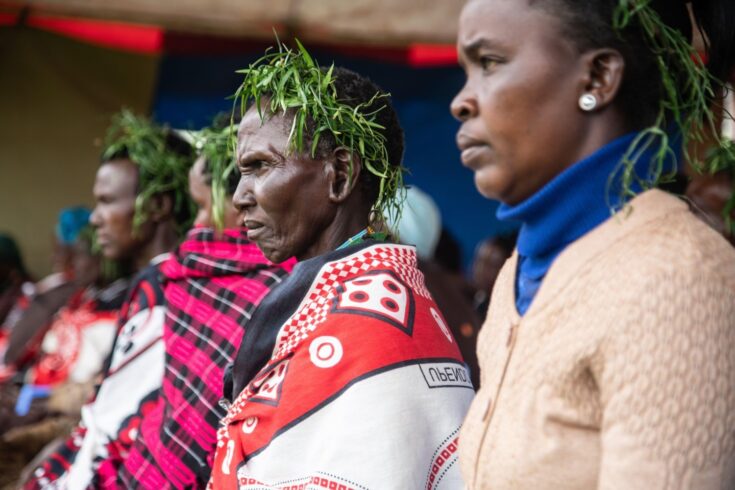When human rights violations occur, international human rights courts are able to order reparations, an act or process of making amends for a wrong, to the victims. This can include a variety of approaches, such as payment of compensation, releasing individuals from detention, or adopting legislation. But the path to helping right a wrong is not always straightforward. All too often justice is not achieved due to a lack of adequate mechanisms to implement reparations.
The Economic and Social Research Council-funded (ESRC) research led by Professor of International Human Rights Law, Rachel Murray at the University of Bristol, focused on understanding how to enhance the delivery of reparations to victims of human rights violations.
Professor Murray explored the extent to which authorities in a number of countries complied with reparations and what factors were affecting their implementation. This research was in collaboration with colleagues at:
- University of Bristol
- University of Pretoria
- University of Essex
- Middlesex Law School
- Open Society Justice Initiative
The research also demonstrated the importance of keeping victims at the heart of the process.
Through influencing strategy and decision-making in bodies such as the African Commission and the African Court on Human and People’s Rights, the research has had significant and life-changing impacts on communities and individuals, helping ensure the victims of wrongs are delivered due justice.
Video credit: Economic and Social Research Council
Video transcript and on-screen captions are available by watching on YouTube.
About the project
To better understand the extent to which state authorities implement reparations, the research team traced individual cases of human rights violations across nine countries:
- Belgium
- the Czech Republic
- Georgia
- Canada
- Colombia
- Guatemala
- Burkina Faso
- Cameroon
- Zambia
The team used a combination of document analysis, interviews, participant observation, workshops and engagement with human rights bodies.
Professor Murray explains:
There’s a growing trend for international human rights courts and other bodies not only to identify where human rights have been violated, but also to order what state authorities should do to remedy the harm. Our project focused on this post-decision phase, so we looked at what actions were taken by state authorities after the judgements. Did they, for example, pay compensation, release prisoners from detention or change legislation, as directed? And, if not, why not?
The evidence showed that implementation was influenced by a range of factors, but that when international bodies were most specific about the reparation required, this increased the likelihood that states would carry out the orders. The research also highlighted the importance of a victim-centred approach to the process.
Professor Murray explains:
Our research shows that consideration of how to remedy the harm that’s been done to a person should be at the very beginning of the litigation process, tailoring submissions around the victim’s need rather than as an afterthought post-judgement.
In addition, victims and their representatives should be involved in discussions about how reparations are to be implemented, once the decision or judgement has been adopted.
Impact of the project
By informing and influencing the strategy of several international bodies, the research has contributed to communities and individuals receiving appropriate remedies for violations suffered.
Influenced the strategy of the African Court
Recommendations by Professor Murray and her colleagues have been incorporated into the African Court on Human and People’s Rights strategy for monitoring state responses. They helped address cases where reparations had not been implemented after rulings, with more than 60 judgements benefiting from this change. Post-ruling communication between the African Court and states has been enhanced to ensure that victims receive redress.
For example, an important judgement won redress for the Ogiek, an indigenous people whose ancestral lands fall within Kenya’s Mau Forest. Professor Murray and her colleagues’ briefing to the African Court included advice regarding how best to ensure redress for the Ogiek people. This was adopted in the court’s ruling against the Kenyan government, which awarded compensation of 157 million Kenyan Shilling (just over £1 million).
Lucy Claridge, Executive Director of International Lawyers Project and lead counsel in the Ogiek case, says:
The Court had to deal with a complex reparations request, both in terms of the nature and extent of the human rights violations, and the number of victims seeking remedy (the Ogiek are a community of approx. 50,000 people). The submission’s focus on the level to which the Court should detail the specifics of the remedy was crucial to establishing a meaningful ruling which is capable of implementation. In addition, the focus on possible Court monitoring of the steps that the state has taken to execute the judgement assisted in setting a vital precedent for state reporting in respect of all future Court reparations rulings.
Placing the victim at the heart of the litigation process
Informed by the research, the Centre for Human Rights and Democracy in Cameroon and the Institute for Human Rights and Development in Africa (IHRDA) have adopted strategies to conduct litigation in a way that:
- focuses on the impact on the victim
- encourages consideration of implementation throughout the litigation process
Professor Murray developed a strategy with IHRDA to give practical advice on steps that can be taken to implement decisions on individual cases from the African human rights bodies. This is helping to ensure that the families of the victims of a massacre in the Democratic Republic of Congo are granted compensation of over $2.5 million, as well as rehabilitation of a school and hospital. IHDRA is now using this strategy as a roadmap in other cases and in dialogue with African states.
Informed changes to procedure at African Commission
Professor Murray and her team’s research evidence more widely informed amendments to the Rules of Procedure of the African Commission on Human and People’s Rights. This resulted in greater visibility of its decisions and more specific rulings to ensure that victims receive the redress due to them.
Find out more
Read more about the project: Securing reparation and righting wrongs.

